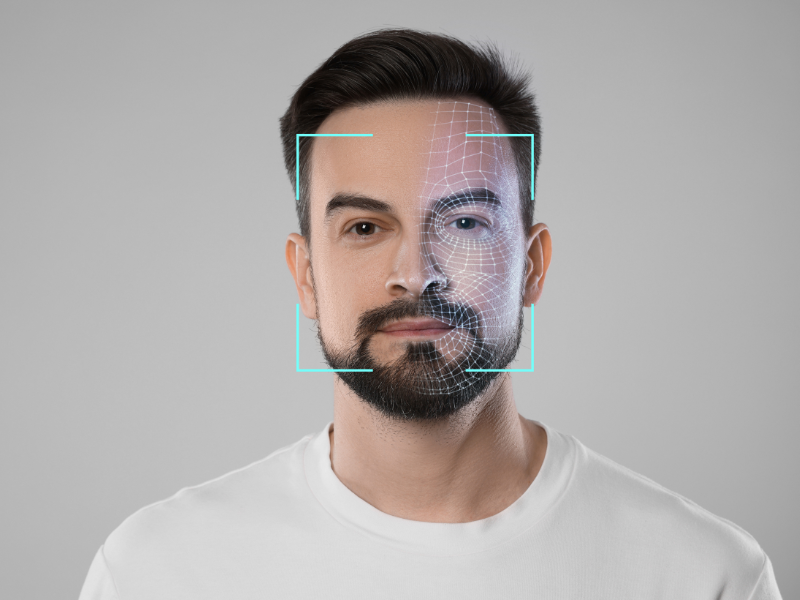Traveling has always required trust — trust that our identities are secure and our journeys protected. As global borders become more dynamic, passports have evolved too. Biometric passports are now the gold standard, delivering smoother travel experiences and stronger security. Let’s explore what sets these documents apart, how they work, and why they’re transforming international travel for all of us.
Key Takeaways
- A biometric passport uses an embedded microchip to securely store personal and unique biometric data, making identities harder to forge.
- Biometric passports speed up immigration with automated e-Gate verification and are globally accepted, streamlining international travel.
- Enhanced security features like encrypted chips and anti-skimming technology reduce identity theft and passport fraud risks.
- Privacy concerns exist, but most authorities use strong encryption and delete biometric data after issuing the biometric passport.
- Obtaining or renewing a biometric passport involves submitting biometrics and personal details through official government procedures.
As we increasingly rely on digital technologies in everyday life, ensuring the security of personal data is paramount. Just like Private Identity’s privacy-preserving biometric authentication solutions that provide secure identity verification without compromising privacy, biometric passports integrate similar technologies to protect travelers’ information. By understanding how these passports work, we can better appreciate their role in securing our global travels.

What Is a Biometric Passport?
A biometric passport, sometimes called an e-passport, is a travel document embedded with an electronic microprocessor chip. This chip securely stores personal data, including unique biometric identifiers like a digital facial image, fingerprints, or even iris scans. Biometric passports look similar to traditional passports on the outside, but you can typically spot them by a small gold rectangular symbol, resembling a camera, on the cover.
Think of it as a highly secure version of the traditional passport. Where older passports relied solely on printed photos and information, biometric passports tie your identity to physical characteristics that are extremely difficult to forge. This advancement helps border officials confirm that the person holding the passport is truly who they say they are. Much like Private Identity’s approach to biometric authentication, which ensures data is processed securely on-device, biometric passports store and protect sensitive data directly on the user’s passport chip.
How Biometric Passports Work
When we use a biometric passport at airports or border crossings, the process blends digital data with physical verification. The embedded chip is read by a special scanner, which instantly pulls up the stored biometrics, such as our photo or fingerprints. This data is then compared to our live image or presented fingerprints, ensuring there’s an unmistakable match.
This process, known as e-Gate verification, speeds up entry and exit points and reduces the risk of identity theft or passport fraud. The chip itself uses advanced encryption, making it extremely difficult for someone to tamper with or clone our passport. In most countries, border control officers rely more on these biometric checks than visual checks alone, creating an extra layer of confidence with every trip.
Much like Private Identity’s on-device biometric verification that enhances user privacy and security, biometric passports ensure that sensitive information is protected at every stage of the travel process, from passport issuance to border crossings.
Key Features and Security Enhancements
The true power of biometric passports lies in their sophisticated security features. Here are a few that stand out:
- Microprocessor Chip: Stores our photo, personal details, and biometric data securely.
- Digital Signature: All information is cryptographically signed by the issuing authority, which verifies authenticity and prevents unauthorized changes.
- Anti-Skimming Technology: Limits who can read the data on our passport by requiring physical proximity and special readers, helping block electronic pickpocketing.
- Tamper-Evident Design: Any attempt to open or alter the chip renders it unreadable, deterring fraudsters.
- Machine-Readable Zone (MRZ): This printed code at the bottom of the passport’s data page adds another quick-reference security measure for officials.
Beyond these features, biometric passports are regularly updated to meet international standards set by organizations like the International Civil Aviation Organization (ICAO). This means our documents not only keep up with technology, but often outpace many forms of digital ID when it comes to security. Just as Private Identity ensures privacy by processing biometric data locally, biometric passports integrate these features to protect both the passport holder’s identity and the integrity of the travel document.
Benefits of Biometric Passports
Switching to biometric passports has brought us a host of benefits:
Greater Security
Tying travel documents to unique personal traits drastically cuts down on forgery, theft, and identity fraud. Biometric passports are hard to duplicate, making them highly resistant to tampering. Similarly, Private Identity’s approach to biometric verification ensures that personal data is never exposed during authentication, as all processing is done locally on the device.
Faster Immigration
Automated gates scan our biometrics, shaving valuable minutes off wait times and keeping lines moving, even during peak travel seasons. This reduces the stress of long immigration queues, especially during busy travel periods. This frictionless process mirrors the user experience that Private Identity offers, where biometrics are used to streamline access without compromising security.
Global Acceptance
Biometric passports are recognized in nearly every country, clearing the way for seamless international trips. They adhere to the international standards set by ICAO, which ensures their widespread compatibility. This level of interoperability is crucial for travelers who frequently move between different countries, much like Private Identity’s ability to offer secure, interoperable authentication solutions across global digital platforms.
Easy Renewals and Updates
Digital records simplify the renewal process, letting us update information with fewer headaches compared to older, paper-only methods. Similar to the ease with which Private Identity allows users to securely manage their biometric data on their devices, biometric passports streamline document updates and renewals, making the process faster and more secure.
Support for Additional Services
Some countries link biometric passport platforms with e-Visas and digital ID services for even greater travel convenience. These added features can make international travel more seamless by allowing travelers to access other services through their secure biometric passport system.
Potential Risks and Privacy Concerns
No system is flawless, and biometric passports are no exception. The main concern is privacy. Storing sensitive biometric data (like facial scans or fingerprints) in a highly secure chip doesn’t entirely eliminate the risk of hacking or unauthorized access. If a government database is breached, our personal information could be exposed or misused.
Another issue is the possibility of mistaken identity if poor-quality equipment or errors occur during the scanning process. While rare, such mistakes can cause delays or even denial of entry. It’s also worth considering that the international sharing of biometric data might make some travelers uneasy, especially where data protection rules vary widely between countries.
To address these issues, most issuing authorities use strict data protection laws and sophisticated encryption. Plus, reputable agencies delete biometric data once a passport is made, only storing it on the physical document, not in a central database.
Much like how Private Identity ensures data privacy by processing biometric data on-device, many countries are now following a similar approach by encrypting biometric information on passports and using secure methods to prevent unauthorized access.
Biometric Passports Around the World
Since the early 2000s, more than 150 countries have launched biometric passport programs. The first wave began after international security concerns rose in the early 21st century. Now, nations like the United States, United Kingdom, members of the European Union, Australia, Canada, and Japan have fully integrated these documents for all international travelers.
Some countries are already moving to add new biometrics, such as iris scans, or are piloting passports in fully digital forms. Even developing countries are adopting biometric systems to prevent document fraud and enhance border controls.
Not everywhere are the requirements alike: For example, some nations collect fingerprints, while others use facial recognition alone. Regardless, nearly all embrace the ICAO’s e-passport standards, allowing widespread interoperability. That makes traveling with a biometric passport a virtual must for anyone frequently crossing international borders.
How to Get or Renew a Biometric Passport
Getting or renewing a biometric passport usually starts with an online application through our government’s official passport site. Here’s a typical process:
- Submit Personal Details: Fill out the application form, providing current personal and travel information.
- Provide Biometric Data: We’ll schedule an appointment to have our photo taken and, depending on the country, fingerprints or other biometrics collected at an authorized center.
- Verification and Payment: Present necessary documents (like our old passport and proof of identity) and pay the processing fee.
- Production: The passport agency encodes our data into the microchip and prepares the document for delivery.
Renewals are usually faster since our details are already on file. For lost or stolen biometric passports, immediate reporting is crucial, as these passports can be instantly invalidated to prevent misuse.
For the most accurate instructions, always check with the official government portal, as requirements may vary by country and personal circumstances.
Conclusion
Biometric passports have redefined what it means to travel securely and efficiently. They combine cutting-edge technology with practical benefits, offering us not just faster movement across borders but also peace of mind about our identities. As this technology advances, we can expect even more streamlined travel and greater protection.
By understanding both the strengths and the challenges of biometric passports, we’re better equipped to navigate a changing world, confident that we have some of the most sophisticated tools for international travel in our pockets.
Frequently Asked Questions About Biometric Passports
What is a biometric passport and how does it improve security?
A biometric passport is a travel document with an embedded microprocessor chip storing your personal and biometric data, such as facial images or fingerprints. This technology enhances security by making it significantly harder to forge or tamper with compared to traditional passports.
How do biometric passports work at airport security checkpoints?
Biometric passports work by allowing scanners to read the chip and instantly access stored biometric data. The information is matched with your live image or fingerprints, speeding up verification and reducing the risk of identity fraud during international travel.
What are the key benefits of using a biometric passport for international travel?
Biometric passports offer enhanced security, faster immigration processing through automated gates, worldwide acceptance, and easier renewals. They also often support integration with e-Visas, streamlining the overall travel experience for most travelers.
Are there any privacy risks associated with biometric passports?
While biometric passports use encrypted chips and strict data protection protocols, risks such as potential hacking or unauthorized access to stored data exist. Governments typically mitigate these concerns by deleting biometrics after issuance and not storing them centrally.
How do I apply for or renew a biometric passport?
To get or renew a biometric passport, apply online via your government’s official passport website, provide required personal and biometric data at an authorized center, submit necessary documents, and pay the processing fee. Renewal is often faster if your details are already on file.
Can biometric passports be used worldwide, and are the features the same in every country?
Biometric passports are recognized globally and meet international ICAO standards. However, specific features or biometric data collected may vary by country, with some using fingerprints, others facial recognition, or additional biometrics like iris scans.
